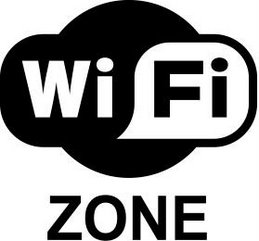Another wireless technology is on the market today, which is similar enough to Wi-Fi at first glance to add to the confusion. The Danish telephone equipment company Ericsson originally developed Bluetooth (BT)wireless. (Ericsson named their radio technology after a tenth-centuryViking king who had a sweet tooth for blueberries.) BT uses the same radio band as Wi-Fi and a similar frequency-hopping scheme to dodge interference. Some application overlap also exists, since some devices using the Bluetooth standard can interface a PC to a printer or to a wired network , just like Wi-Fi. Some equipment is being designed today, which , one for BT and another for Wi-Fi. But other than that special circumstance, Bluetooth and Wi-Fi are not compatible.When used in close proximity, Bluetooth devices are likely to interfere with Wi-Fi devices. They both employ a frequency-hopping scheme that minimizes fixed-frequency interference, but they both hop among the same range of frequencies, and sometimes hop on top of one another.
Moving the BT device can often solve the conflict, since its operating power and range are less than Wi-Fi. Newer BT models, using technical tweaks approved bythe FCC, will most likely peacefully coexist with Wi-Fi.An argument exists in the wireless industry about which of these two technologies will dominate in years to come. But even now the two standards are becoming more differentiated and applied to different customer needs.Wi-Fi is a method for connecting PCs and printers to a LAN over adistance of 75 to 300 meters. Bluetooth, with its shorter 10-meter range, deals with a personal area network (PAN). Its unique application is the elimination of wires to hand held or wearable devices, such as PDAs. A wireless headset for a cell phone would be another good example. Unlike a structured LAN, these personal devices link up on an ad hoc basis. Is This Trip Necessary?
Your Best Bet If all these standards are puzzling, your safest bet remains the 802.11b standard. So many people are using it that it won’t anytime soon. A manufacturer who wants to prove that his product will work with other manufacturer’s Wi-Fi equipment must submitit to the Wi-Fi Alliance for testing. Before you buy a piece of Wi-Fi hardware,you should first examine the package for a prominent label that indicates conformance. Very likely you will find another label indicating which radio band the equipment uses.
Tuesday, 24 April 2007
Subscribe to:
Post Comments (Atom)

No comments:
Post a Comment